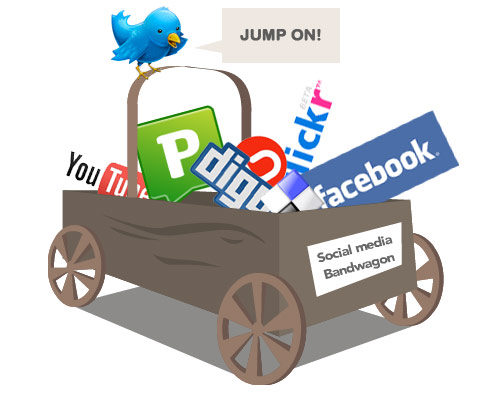The “R” in Marketing – Marketers (and Politicians) Still Missing the Point of MRM
I’ve been thinking a lot about the “R” in marketing lately – the relationship factor, if you will. That word has always been in CRM but what about MRM? Marketing Relationship Management? I’ve been thinking about how the best marketers today really get this – they aren’t just about pushing content or messaging, but about building the right relationships in order to be heard. Marketers have not traditionally been “relationship” focused. They have been “megaphone management” focused.
Then last night I received a long, two-sided paper letter from a local politician’s party, telling me his long tales of woe and determination and why I should vote for him. And I thought, “Wow, this is so lame. How about trying to build a relationship with me all along, not just days or weeks before a vote?” (Note – this has nothing to do with my respect or thoughts on this candidate so please don’t go there – it’s about their tactics, not my political opinions.)
Marketers (and politicians, essentially your lobbying for votes is marketing) – let’s get smarter about the R in marketing. What does the “R” stand for today and how are you implementing it in your campaigns – or, are you? If you’re in marketing, you need to be thinking about the “R factor”:
- Obviously, the biggest marketing R is RELATIONSHIP. Just look at that word and really think about it. What does it take to build a relationship – and sustain a positive one – with someone? It takes time, effort, consistency, attention. Repeat.
- RECOGNITION – show me that you know who I am, you care about what I like and that you recognize my purchasing (or voting) power.
- And that you RESPECT it. Answer me if I ask a question. Ask questions of me. Make an effort to find me and communicate with me where I am – don’t expect me to come to you anymore. Even if you never do anything with my answers other than acknowledge them, I’m likely to feel a special affinity towards you because you listened and cared enough to ask my opinion or feedback.
- REWARD – marketers are generally used to “rewarding” loyal customers and potential prospects through recognition or special deals. This hasn’t changed. But what has changed is that your rewards – or lack thereof – will be publicly talked about, blogged about, tweeted about. Make ’em good, make ’em real and make ’em consistently – your reward for doing so will be tenfold through positive, public word-of-mouth. (Another topic here big enough for its own blog post is cross-channel recognition and communications with loyal customers – a new CRM challenge.)
- RELEVANCY – so you’re on Facebook or Twitter. Congratulations. Who are you following? Who are you enticing to follow your brand or politician? Who are you conversing with? What are you talking about? Make sure it’s relevant to me or your time is being wasted. Show me you “know” me – show me you want to talk about things already on my mind. Don’t come at me with your marketing messages but engage me in a dialogue relevant to what I have already made very clear I care about. Then, I will listen to you and your marketing messages – and maybe even try your product or service (or vote for you) – because you made an effort to relate to me as a customer, voter, prospect…but mostly, a person.
None of this may seem new or earth shattering, but I continue to see marketers every day who don’t get it. They keep pushing their news stream or blog posts or special offers without any dialogue or focus. They talk about Twitter numbers but then hesitantly say, “Oh, um, not really” when we ask if they have a strategy around building fans and followers – the relevant and right fans and followers. They don’t answer questions on Twitter unless it’s a customer service issue – which they immediately try to take “offline” – or they post content on Facebook and then don’t engage with fans who comment. This isn’t so much about the use of social media as it is recognizing the power of building stronger relationships – and how social media opens up such a huge opportunity to do so.
And, as I’ve been bantering about on my personal Facebook page this morning, I see a lot of politicians missing an opportunity to put some “Love” in their “Lobbying.” That is, to connect with a younger demographic through social media – and to use it to connect with me, to talk with me, to not just send me two pages about you, but to show me you care to know a little about me – my needs, desires, hopes and dreams as a voter. I want to get to know you as well – but, only pushing content to me – and especially only around election time – is not productive. Even politicians using social media aren’t doing it right yet. Someone stated this morning that most people wouldn’t be open to it because the assumption is that it would be an aide or a junior executive behind the social media communication. But I’m okay with that – as long as it’s clear – if it means I get to know a candidate in a way that I can relate to, that I get to see their activity, hear from them and ask questions throughout the year – on my timetable, not theirs – and if I feel connected to them. Social media is all about a connection that we’ve never had before – politicians (and marketers!) should be embracing that opportunity to build long-lasting, loyal relationships.
Like traditional marketers, I don’t think political parties are building relationships with the masses. Let me say, I hate your ads. I roll my eyes at your sign-holding-picketers over the highway or in front of the grocery store and your recorded phone messages make me want to rip the phone from the wall. I laugh – in disgust – at the money you are throwing out the window on such irrelevant, surface and old-school campaign “strategies.” I don’t want you to touch my baby, let alone kiss him, and your handshake really means nothing to me if you haven’t taken the time to connect with me, relate to me and talk to me in a day and age when there’s no excuse not to. You’re not a celebrity, so stop acting like one – come “down” and talk to me if you want my vote (or my purchase).
Marketers, social media has changed the R in marketing. It’s about relationships – that is, relating between two entities – and yes, those take time to build, cultivate and keep. But like our personal lives, the rewards are well worth it.
What do you think? Are marketers doing a good job building relationships in today’s social business world?
–



